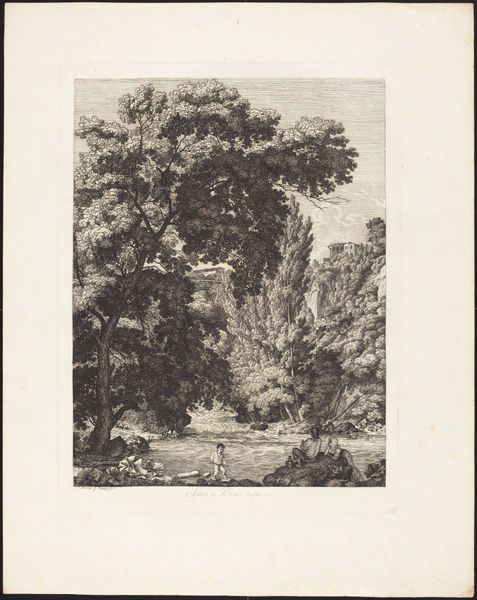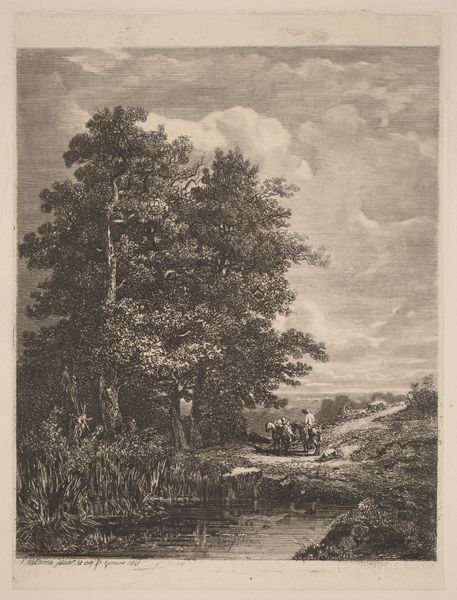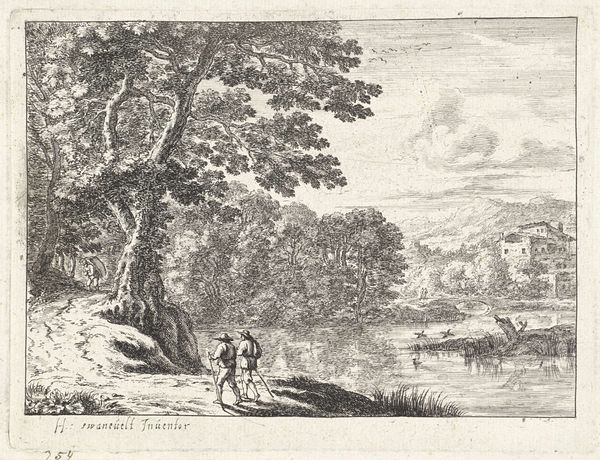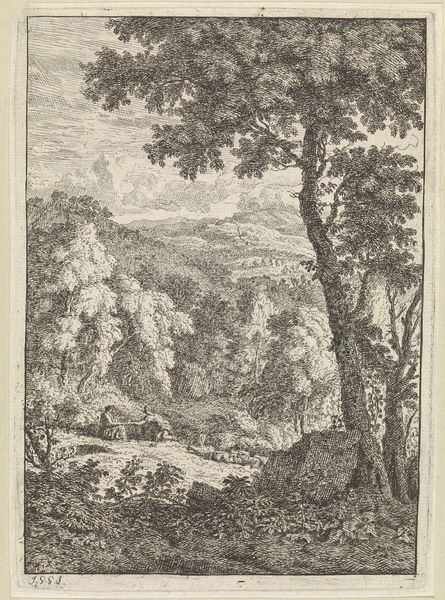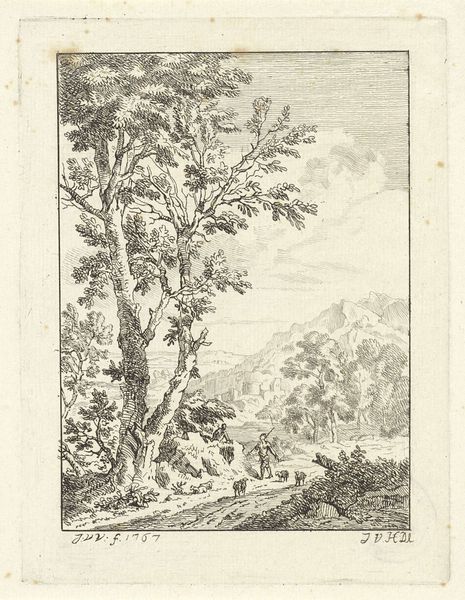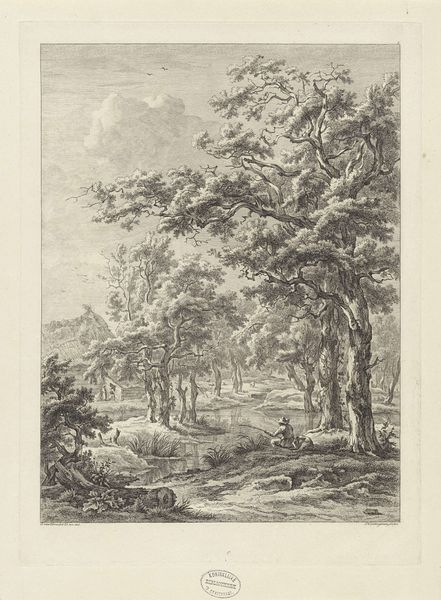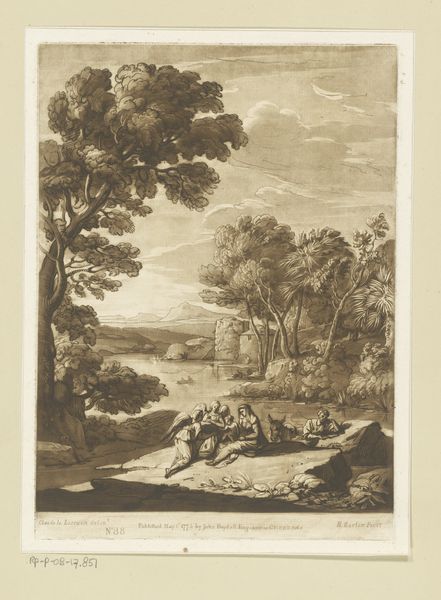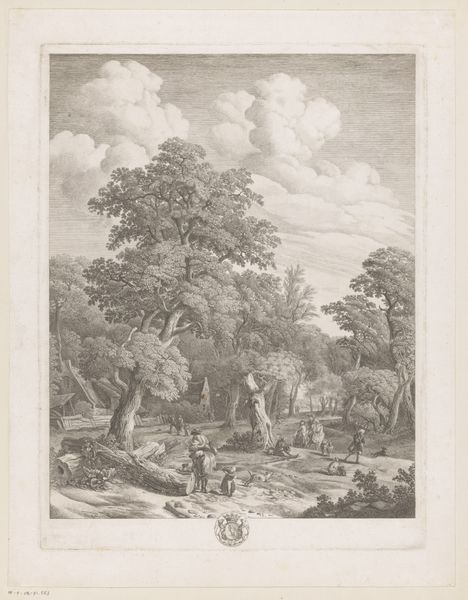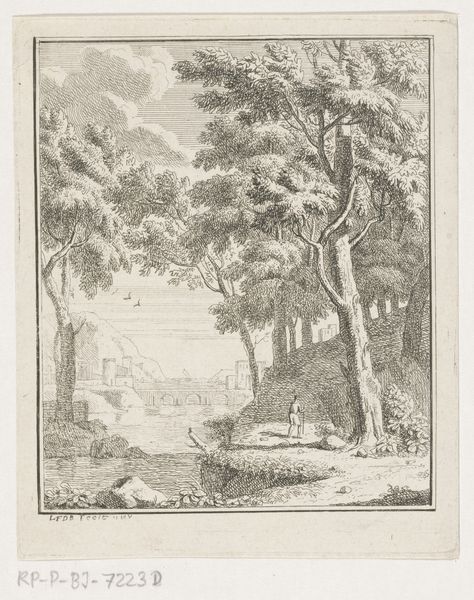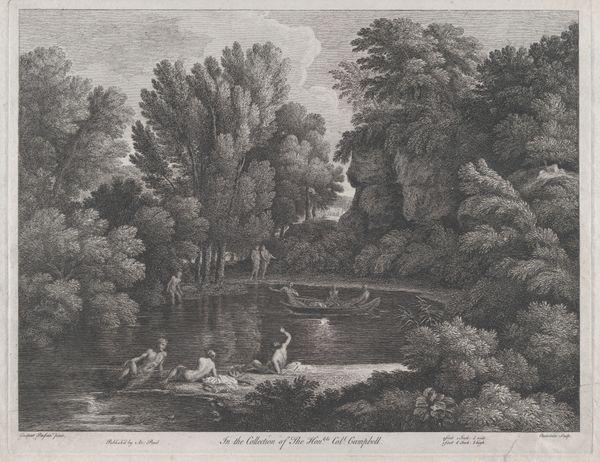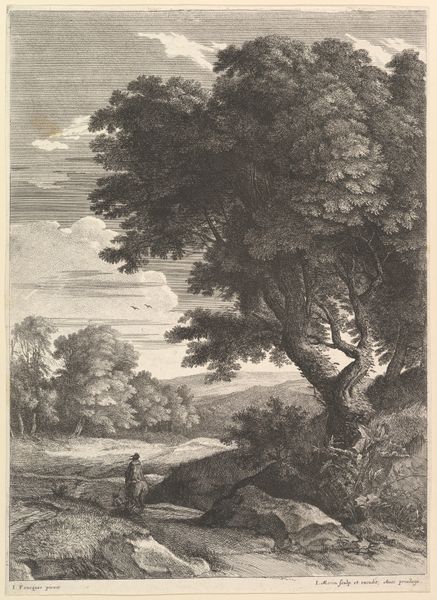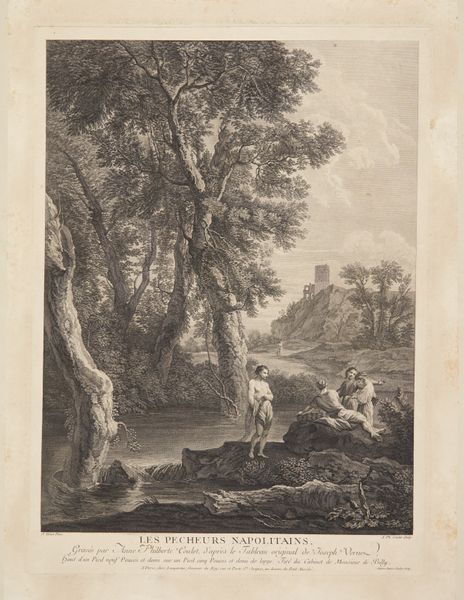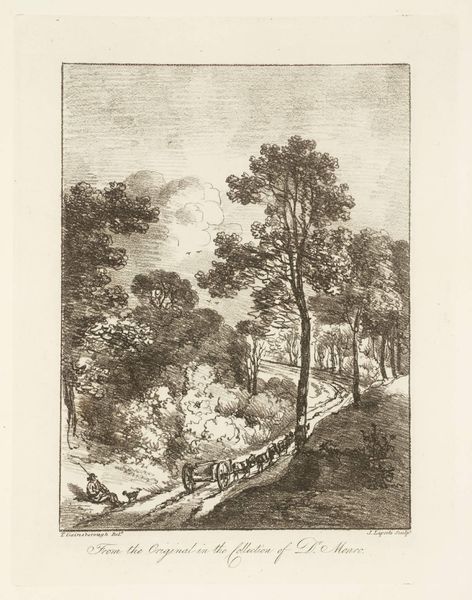
Copyright: CC0 1.0
Editor: This is Jacob Wilhelm Mechau's "Below the Lupo Bridge in Tivoli," an etching that pictures a serene scene of figures near a river. I find the natural setting quite romantic, but I'm curious, what historical narratives are at play here? Curator: Well, look at the figures. Their placement within this idealized landscape raises questions about power dynamics and societal roles in 18th-century Europe. How does Mechau's depiction reinforce or challenge existing social structures through the relationship of people and nature? Editor: So, it's not just a pretty picture but a reflection of societal values? Curator: Precisely! Consider the historical context. The Grand Tour was popular then, where wealthy Europeans would travel to places like Italy. Mechau's work may be a critique of that elite tourism, perhaps highlighting its impact on the local environment and communities. Editor: I didn't consider that. I now see it as a comment on the era's social and environmental consciousness. Curator: Exactly! It reveals how landscape art can also be an examination of cultural values and power structures of the time.
Comments
No comments
Be the first to comment and join the conversation on the ultimate creative platform.
